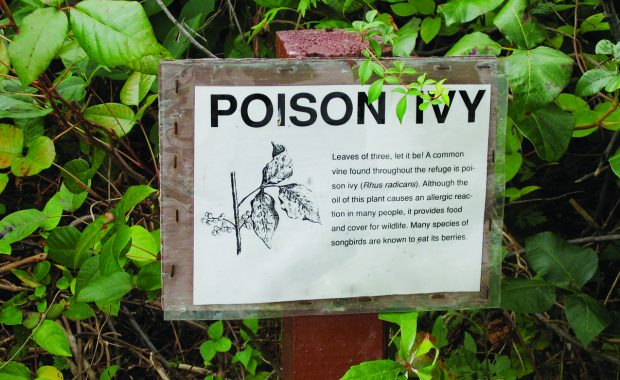Poison ivy is an unwelcome guest on many properties. Unfortunately, many people don’t recognize the presence of poison ivy on their property until it’s too late and they’ve already fallen victim to the uncomfortable, itchy red rash that is the plant’s hallmark.
According to Poison-Ivy.org, a website providing information about poison ivy, poison oak and poison sumac, the rash from poison ivy may first appear as just a slight itchy spot. But that spot will gradually get worse and can even cover your entire body with giant red sores if left untreated or if it goes undetected for too long. That only highlights the importance of learning to recognize poison ivy on a property and taking the appropriate measures to prevent anyone from coming into contact with it.
Is all poison ivy the same?
Many people may be surprised to learn that all poison ivy plants are not one and the same. Poison-Ivy.org notes that there are different types of poison ivy in different places, so curious homeowners should visit the site to determine how to identify the type of poison ivy specific to where they live. Eastern Poison Ivy grows on the ground, climbs and sometimes appears as a shrub. And despite its name, Eastern Poison Ivy grows from the east coast to the midwest.
What are some telltale signs of the poison ivy plant? Eastern Poison Ivy is the most widespread poison ivy plant, and these are some of its characteristics:
· Poison ivy plants always have leaves of three. No poison ivy plants have more than three leaves.
· Poison ivy always grow left, then right. That means that the stem/branch of leaves closest to the root of the plant will always lean left. Subsequent stems/branches of leaves can lean right. Stems/branches of poison ivy leaves are never side by side.
· Poison ivy plants never have thorns.
· The edges of poison ivy leaves are never saw-toothed or scalloped.
· Poison ivy leaves will appear differently depending on the season. In spring, Eastern Poison Ivy leaves will appear red. As spring turns into summer, the leaves will gradually appear more green. Come fall, the green leaves will look as if they were brushed with red, with some leaves featuring patches or spots of red.
The poison ivy rash can be very uncomfortable. Learning to identify poison ivy plants can help people avoid the rash.
